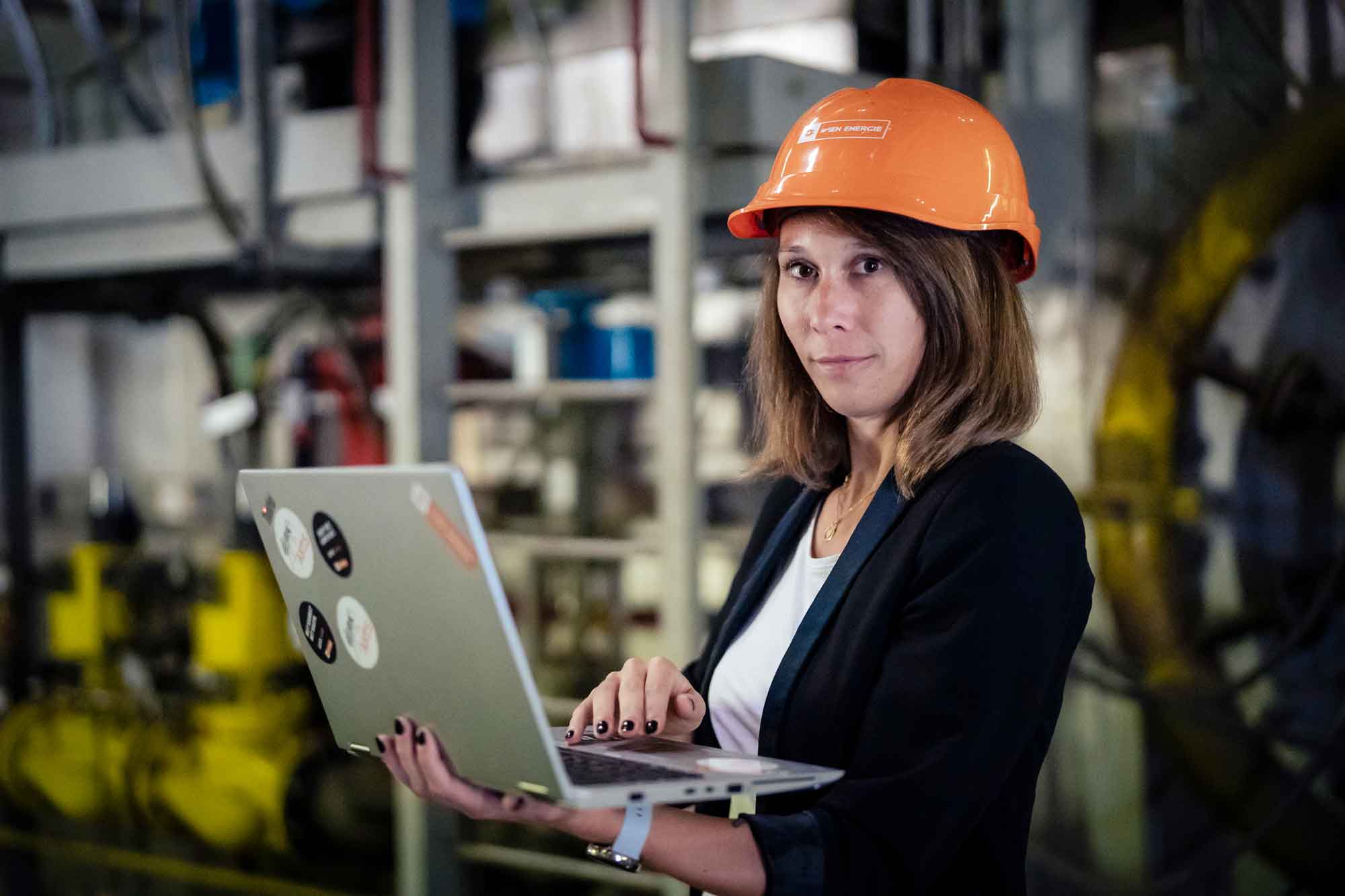One of the Austrian female ambassadors of the international “Equality in Energy Transitions” initiative is 35-year-old Michaela Killian, who took over the management of Wien Energie’s Simmering and Donaustadt power plants in 2023 and thus became responsible for around 140 (almost exclusively) male employees.
Michaela Killian, who was also a competitive sportswoman for many years (playing volleyball), initially studied technical mathematics at TU Wien. She switched to the Institute of Mechanics and Mechatronics for her doctorate, before conducting post-doctoral research on predictive algorithms in industrial processes after completing her studies. One real-life application of this field of research includes building automation. Killian began her career as a data scientist in the Asset Operations department at Wien Energie in 2019. Her responsibilities in this role included optimising systems and increasing their level of automation based on data analyses. “This work gave me a good insight into the power plants, waste incineration plants and the renewable energy generation division at Wien Energie,” explains Killian. “This is why I decided to go one step further into technology.” Michaela Killian has managed the two large power plants in Simmering and Donaustadt since the autumn of 2023. Prior to this role, she had been Head of Operations Management since early 2022, and now has overall responsibility for the power plants, putting her in a key position to drive innovation for the energy transition and help shape the secure and sustainable future of energy.
Green hydrogen as the energy Source of the future
One key topic here is the use of green hydrogen in the energy system of the future. Green gases will play an increasingly important role as energy carriers for the heating transition and in the transportation sector. A large-scale demonstration project was launched at the Donaustadt power plant in 2023 involving the world’s first hydrogen operating trial in an existing gas turbine of this size. Working together with VERBUND, RheinEnergie and Siemens Energy, it is testing out co-firing hydrogen into the gas turbine of a combined heat and power plant for the first time. The results so far are promising: the Donaustadt power plant is capable of saving around 33,000 tonnes of CO2 every year by adding just 15 per cent by volume of green hydrogen.1 “In 2040 we will still be needing flexible power plants. So we are already working on solutions today that will let us decarbonise our power plant portfolio in the coming years”, says Killian.
1 See article in the eia edition 4/2023
www.energy-innovation-austria.at/article/h2real/?lang=en

